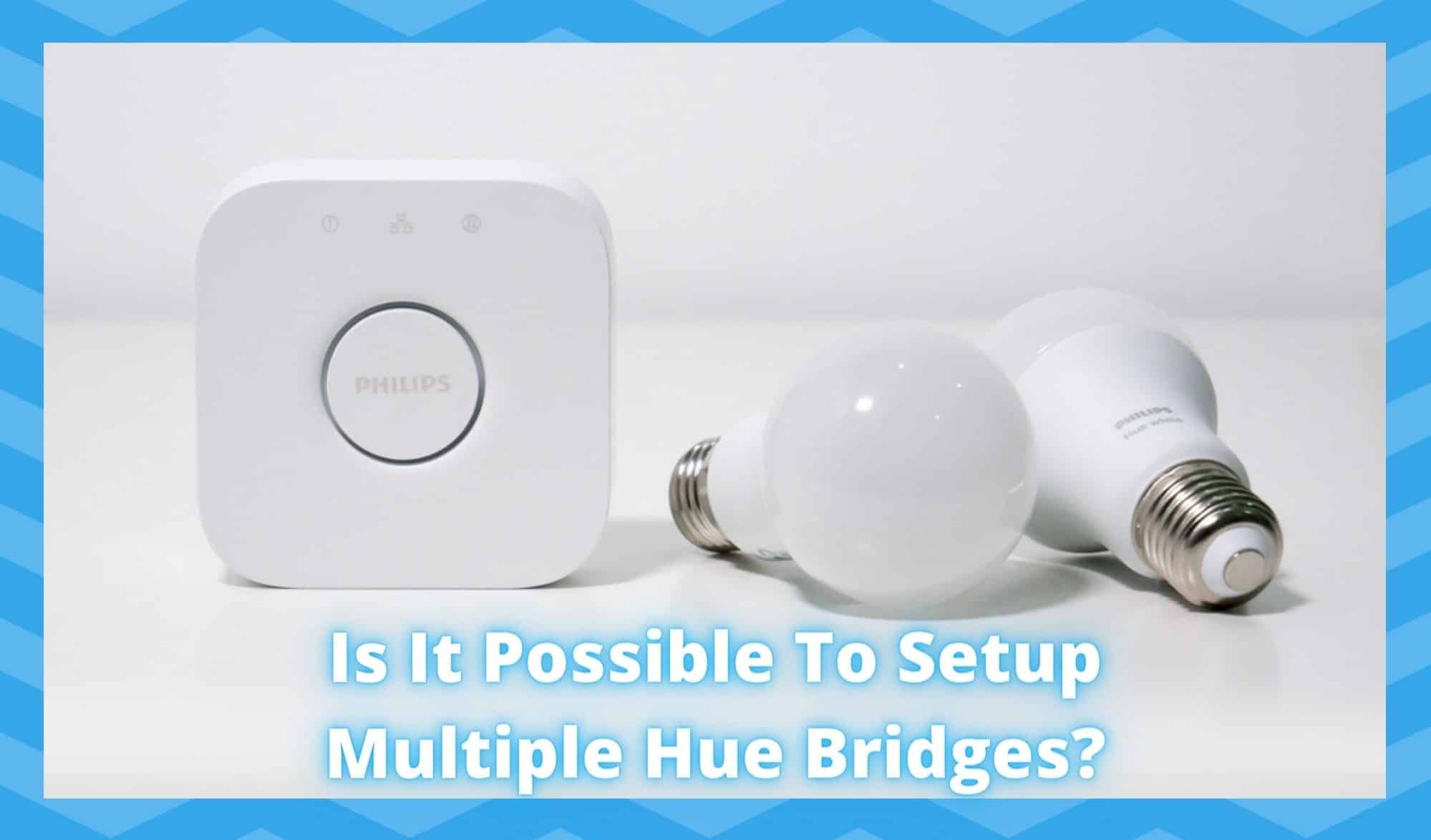
At this stage, Philips have firmly established themselves as one of the best smart lighting brands out there. A lot of the reason for this is that they have a product for pretty much everything. But we tend to put a lot of weight on the fact that their stuff is nearly always far more reliable than their competitors’.
On top of that, they always seem to have a wider array of functions and abilities. To us, it’s worth paying that little bit more to get something you know will just work and will last a bit longer.
So, faced with a choice between the likes of LIFX and Wyze vs. Philips, we’re always going to lean toward the latter. However, like any other smart home equipment, it can be confusing trying to figure out exactly what you can and can’t do with a Philips Hue Bridge.
In particular, quite a few of you seem to want to use more than one Hue Bridge at the same time. So, for those of you who asked, here’s what we’ve found out!
Setting Up Multiple Hue Bridges
For those of you who are trying to get a lot of smart lights, it can become a bit of a nightmare to get them all to connect to a single Bridge. Really, it can seem like the only way it is ever going to work is if you buy another to lighten the load on the first.
If you have been wondering if any of this is even possible, we have good news for you – it is 100% possible. In fact, trying this out will have zero negative effects on your automation system as a whole.
How it works
How it works is that you can assign your lighting into different groups, each representing a different are of the building that you are trying to light. It’s easier than you’d think it would be. For example, you don’t even need to have the hassle of constantly switching tabs to use different Bridges.
Instead, all you have to do is open up the app on your phone and you can have full control from there. To really finesse the process, you can always configure the lights with some sensors for a perfect flow.
Really, the only part of the process that can cause a few headaches is when you are trying to hook the lights up to the new Hue Bridge for the first time. After you get the hang of that though, the good news is that there isn’t a maximum restriction to the number of Bridges you can add in.
Essentially, if you happen to be a billionaire with a massive mansion, you will still be able to control the lighting in that vast space with an appropriate number of Bridges.
For us, we think that having an extra Bridge or two in a large setting is actually a great idea, and not one to be shied away from. After all, by not overloading them, you are giving them a better chance to perform to their optimal levels. As the old adage goes; “a burden shared is a burden halved”.
But, before we finish up here, we do have one thing to warn you about. There are many of you out there that have mentioned that getting multiple bridges to pair with your Google Home can be a bit of a struggle.
However, it also appears that this particular problem mostly cropped up for those who had Google devices hooked up in one area of the home, with the Bridge having been cast away outside of its connectivity range.
The Last Word
Great news! It is entirely possible to set up as many Hue Bridges as you could ever need or want. There are no negative side effects to doing so. It won’t make a total mess of your smart lighting set up. In fact, for those of you working a lot of lights over a large space, it is actually recommended protocol!
So, if you happen to fit into that description, we would 100% recommend that you lighten the load on your current Bridge by getting another one involved.
The app is intuitive enough that you will easily be able to manage all of this and not become overwhelmed by multiple tabs and notifications. The interface supports the user accessing every device they have from one station. We hope that explained everything. Enjoy!

According to Philips HUE support all bridges have to be connected directly to the main router, nothing in between, and my router only have 3 ports and I will need 5-6 bridges.
1. Is it true?
2. Is there another way of doing it?
🤞🏼🤞🏼
I followed Andrew’s advice and used Bridgewrapper… worked perfect!
The problem is that Amazon’s Alexa can’t cope and all of a sudden starts to randomly assign Hue devices to random groups. So, with a second bridge to lift the limit on connected devices I then all of a sudden found Alexa turning a random bedroom light on when I asked her to turn on the kitchen and, sadly, not all the kitchen lights were in the group anymore, some of them had also migrated groups. Trying to put lights back in their groups was futile and frustrating because tapping save and you’d see them reassign there and then. So, I’ve not managed to figure out how to solve this yet!
Use the skill Bridgewrapper.
I use the official Hue skill for my primary hue bridge and Bridgewrapper for my other two. Works great so far. You might want to also go into the Apps tab on the meethue account for each bridge and remove old integrations. I used to randomly get old hue devices being discovered in the alexa app but i think this solved that. To be safe, disable the hue skill, remove all hue devices, remove all old apps from the meethue accounts, and then use all your bridges in bridgewrapper or use one in the official skill and the rest in bridgewrapper.
Max/Peter,
I use a third party app iConnectHue. I have three hue hubs (2 in one house, 1 in another). App seamlessly combines them all. Unfortunately with multiple hubs, actions on one hub can’t trigger on another so plan accordingly.
Regards, John
What if I have 2 houses and a Hue brige in each. Is there a possibility to control Bothe remotely ? I have not been able to connect both barges to my account ! Only one being connected to my account and have the remote control active
i have the same problem – any solutions ?